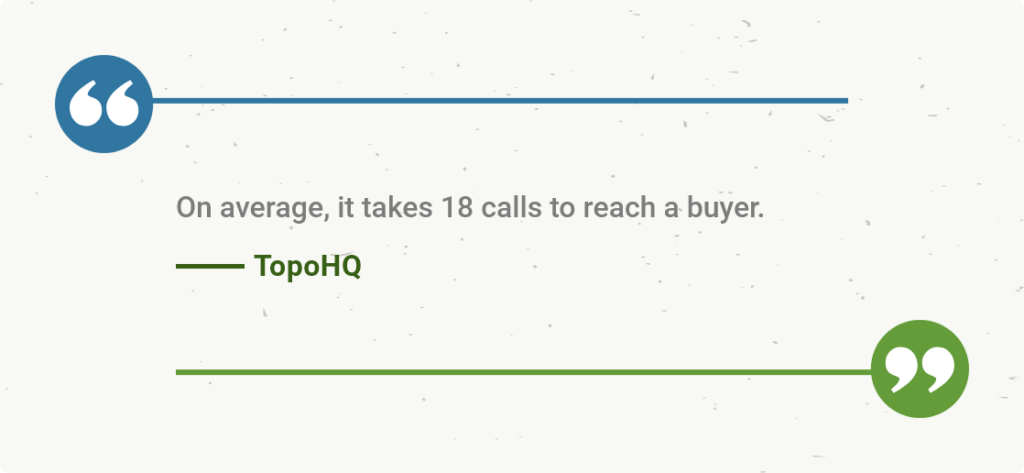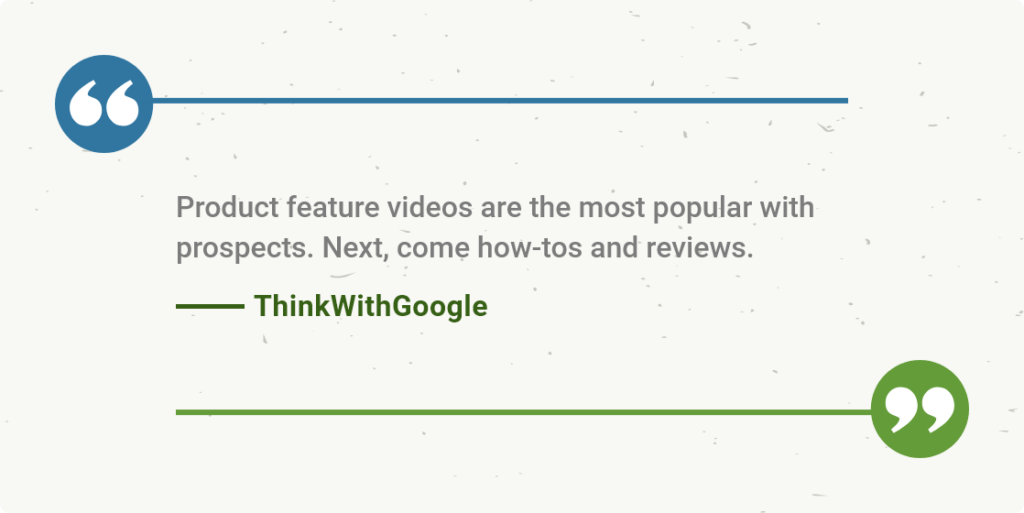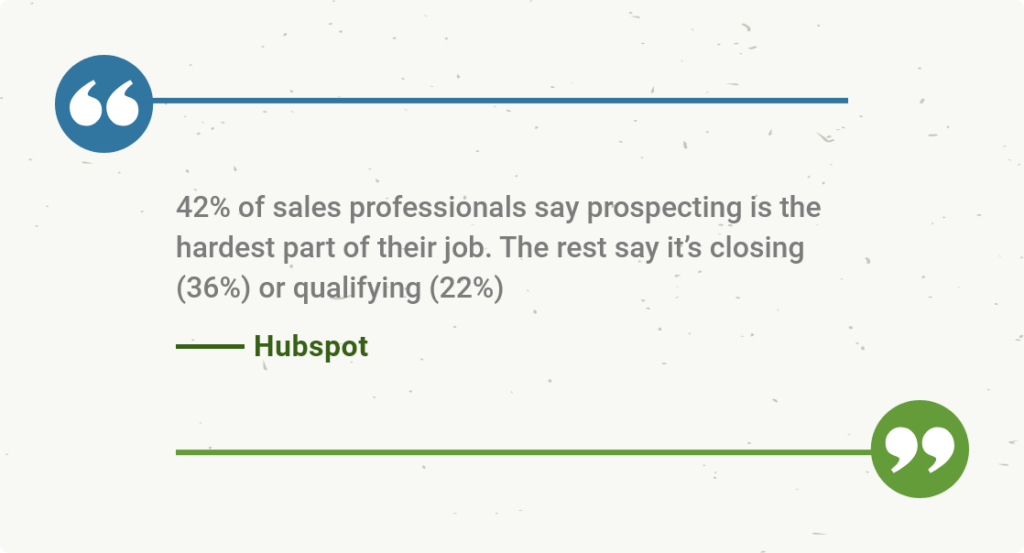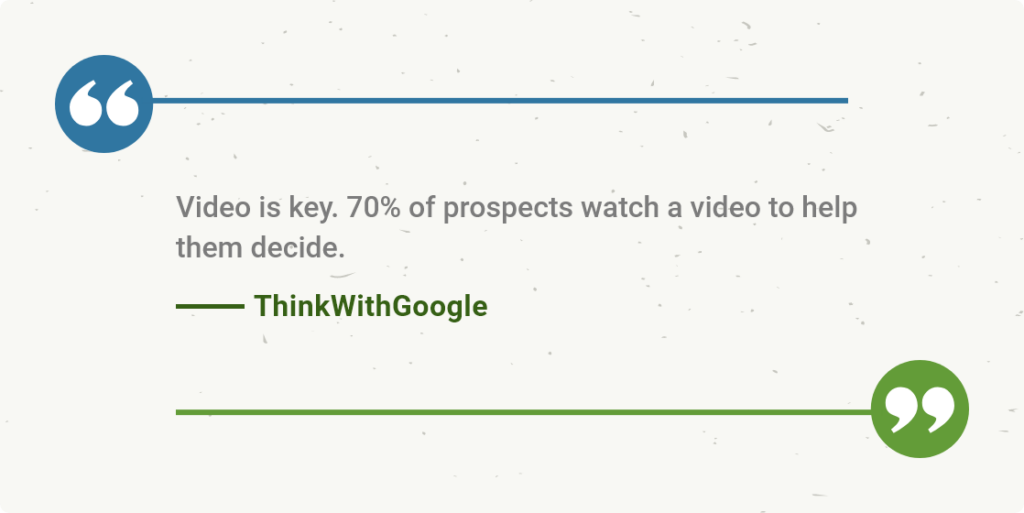
Prospecting is the lifeblood of your sales career. Without it, your pipeline will dry up and your career will stall
-Jeb Blount, Author-‘Fanatical Prospecting’
This quote is enough to validate the point that sales prospecting is the lifeblood of an SDR’s career. Also, it is damn hard.
Prospecting is the method through which an SDR filters and reaches out to ideal potential clients. Sales prospecting is the process of
- Identifying these clients,
- Reaching out to them,
- Nurturing them and pushing them into the sales funnel, and
- Finally, closing the deal when they decide to purchase from you.
Sales prospecting can be either- Outbound or Inbound. Inbound prospecting involves creating content and campaigns that attract potential customers to your website or social media channels.
Outbound prospecting, on the other hand, involves reaching out to potential customers who may not have expressed an interest in your products or services.
Related read: Inbound vs Outbound sales: A comparative analysis
Here’s a tabular comparison between the two:
| Aspect | Inbound Prospecting | Outbound Prospecting |
| Approach | Attracts potential customers to come to you | Reaches out to potential customers who may not be aware of your brand |
| Target audience | Customers actively seeking solutions | Customers who may not have expressed interest in your products/services |
| Content | Content focuses on customer’s pain points and problems | Content is personalized to individual customers |
| Strategy | Customers initiate contact with your brand. – optimizing SEO, – creating quality content, and – leveraging social media | You initiate contact with potential customers. – creating a targeted list, – segmenting, and – using email automation. |
| Conversion rate | Higher conversion rates as customers are already interested in your product. Techniques include: – optimizing landing pages, – A/B testing, and – Lead nurturing campaigns | Lower conversion rates as potential customers may not be actively seeking a solution to their problems. Techniques include: – building rapport, – personalization, and – addressing objections. |
| Time frame | Results may take longer as customers take time to find you | Results may be quicker as you are actively reaching out to potential customers |
The 7 sales prospecting techniques mentioned here are a combination of both inbound and outbound sales prospecting techniques.
- Cold Calling
- Email Outreach
- Social Media Prospecting (Social selling)
- Referral Prospecting
- Networking
- Becoming a thought leader or an SME
- Video Prospecting
#1: Cold Calling
It is a sales prospecting technique that involves making phone calls to potential customers with the aim of-
- introducing your product or service,
- building rapport, and
- generating new business opportunities.
It is a tried-and-tested method, among various prospecting tactics for SDRs, that has been used by sales professionals for decades.
How to prepare for a cold call:
- Research the prospect: Before making a cold call, it is important to research the prospect to understand their business, pain points, and needs. This will help you tailor your pitch to their specific situation and increase the chances of success.
- ICP: Researching isn’t enough. Prepare customer profiles that represent your ideal customers.
- Practice your script: Write a script that outlines your product or service’s benefits and how it can help the prospect. Practice your script to ensure that it sounds natural and engaging.
- Be prepared to handle objections: Prospects may have objections or concerns about your product or service. Prepare for objections in advance and have responses ready that address their concerns.

Tips for a successful cold call:
- Be confident: Cold calling can be intimidating, but it is important to be confident when speaking with prospects. Speak clearly and with authority, and project a positive attitude.
- Ask open-ended questions: Asking open-ended questions can help you engage the prospect in a conversation and get a better understanding of their needs. Examples of open-ended questions include “Can you tell me more about your business?” and “What challenges are you currently facing?”
- Focus on the benefits: When discussing your product or service, focus on the benefits rather than the features. Prospects are more interested in what your product or service can do for them than its technical specifications.
- Listen actively: Listening actively to the prospect can help you understand their needs and tailor your pitch accordingly. Avoid interrupting the prospect and take notes if necessary.
- Follow up: If the prospect is not interested in your product or service, ask if it would be okay to follow up in the future. This can help keep the door open for future opportunities.
Suggested Read: The winning script for the first cold call
#2: Email Outreach
Email prospecting is a sales technique that involves sending unsolicited emails to potential customers to generate new business opportunities. It is a cost-effective and time-efficient method that has become increasingly popular in the digital age.
Why email prospecting is effective:
- Cost-effective: Email prospecting is a cost-effective method of reaching out to potential customers. Unlike traditional marketing methods such as direct mail, there are no printing or postage costs.
- Time-efficient: Email prospecting allows sales professionals to reach a large number of prospects quickly and efficiently. With the right lead-generation tools, it is possible to send personalized emails to hundreds or even thousands of prospects in a matter of minutes.
- Trackable: Email prospecting is trackable, which means that sales professionals can see who has opened their email and clicked on links. This information can be used to gauge interest and tailor follow-up communications accordingly.
Crafting effective prospecting emails:
- Personalize the email: Address the prospect by name and tailor the email to their specific situation. Mention something you found out about them during your research, such as their industry or recent achievements.
- Keep it concise: Keep the email short and to the point. Use bullet points to highlight the key benefits of your product or service.
- Use a clear call-to-action: Clearly state what you want the prospect to do next, such as scheduling a call or meeting. Make it easy for them to take the next step by providing a link or contact information.
- Use a professional email address: Use a professional email address that includes your name or your company’s name. Avoid using personal email addresses such as Gmail or Yahoo.
An example of the template-
| Hi {{firstName}}, I’ll keep this short and sweet to make the 26 seconds it takes to read this worth your time (yes, I timed it.) As a [your job title] at [your company], I get to speak with people like you about achieving [talk about the goals of your prospect]. {company_name} is on my radar because we’ve helped a lot of companies [talk about what your company helps your customers accomplish. e.g generate more pipeline and close mode deals]. Could we schedule a 15 to 20-minute call to discuss your strategy, what challenges you face, and how you envision your plan changing down the road? Just let me know when you’re free to speak and I’ll get some time on your schedule. Best, Adam |
Best practices for email prospecting:
- Follow email etiquette: Follow proper email etiquette by using a professional tone and avoiding overly ‘sales’ language. Be respectful of the prospect’s time by keeping the email concise and to the point.
- Test and refine: Test different subject lines, email templates, and call-to-actions to see what works best. Refine your approach based on the results.
- Personalize your follow-up: If the prospect does not respond to your initial email, personalize your follow-up emails. Mention something you discussed in your initial email or provide additional information that may be of interest to them.
- Use email tracking tools: Use email tracking tools such as HubSpot or Yesware to track email opens and clicks. This information can be used to gauge interest and tailor your follow-up communications accordingly.
#3: Social Media Prospecting (Social selling)
Social media prospecting is the process of using social media platforms such as LinkedIn, Twitter, etc. This is to identify and engage with potential customers. With the vast number of people using social media platforms, it has become a powerful tool for sales professionals to connect with prospects and generate leads.
The benefits of social media prospecting
- Access to a large audience: Social media platforms have millions of active users, providing sales professionals access to a large audience of potential customers.
- Ability to build relationships: Social media allows sales professionals to connect and engage with prospects in a more personal and meaningful way, building relationships that can lead to business opportunities.
- Efficient use of time: Social media prospecting is a time-efficient method of generating leads, allowing sales professionals to identify and engage with prospects quickly and easily.

How to identify prospects on social media:
- Use search functions: Use the search functions on social media platforms to identify potential customers based on keywords such as job titles, industries, and geographic locations.
- Join groups and communities: Join relevant groups and communities on social media platforms where your target audience is likely to be active. This will give you access to potential customers who are already interested in your industry.
- Monitor hashtags: Monitor industry-specific hashtags on Twitter and Instagram to identify potential customers who are discussing topics related to your product or service.
Strategies for engaging with prospects on social media:
- Personalize your approach: Personalize your approach by mentioning something you found out about the prospect during your research, such as a recent article they wrote or a project they worked on.
- Provide value: Share industry news, insights, and tips that are relevant to your target audience. This will position you as a thought leader and help build trust with your prospects.
- Be responsive: Respond to comments and messages from your prospects promptly. This will show that you are attentive and interested in building a relationship.
- Use social media tools: Use social media tools such as Hootsuite or Sprout Social to schedule posts and monitor engagement. This will help you stay organized and save time.
#4: Referral Prospecting
One of the best prospecting tactics for SDRs is- Ask your current customers or business partners for referrals. It is a highly effective and low-cost lead-generation method that leverages the trust and credibility of existing relationships.
Check out some of the below stats that show the importance of referrals.
- Salespeople who actively look for and take advantage of recommendations make up to 5x as much money as those who don’t.
- A referral is currently the starting point for 84% of customers.
- Buyers are 92% more likely to believe personal recommendations.
- 91% of customers say they would recommend a business. Only 11% of sales reps request recommendations.
Referral prospecting involves asking current customers or business partners to refer potential customers to you. Provide them with a compelling reason to refer you and make it easy for them to do so.
How to ask for referrals
- Ask at the right time: Ask for referrals when your customer is most satisfied with your product or service. This could be after a successful project or a positive customer service experience.
- Be specific: Be clear about who your ideal customer is and what type of business you are looking for. This will help your customer identify potential referrals that are a good fit for your business.
- Provide an incentive: Consider offering an incentive to customers who refer new business to you. This could be a discount on their next purchase or a gift card.
An email template for the same-
| Sub: Request for referrals Hi [first name], I hope this email finds you well. As a valued customer, I wanted to reach out to see if you could help me out. At [Company Name], we’re always looking to grow our business and help more people, and I believe that your network could benefit from our product as well. Would you be willing to refer us to anyone who might be interested in what we offer? I would greatly appreciate any help you can give in spreading the word about our business. To make it easy for you, I’ve included a brief description of our products and services below. If you know of anyone who could benefit from what we offer, please feel free to forward this email to them or introduce us directly. I’m happy to answer any questions they may have and provide more information about our company. Thank you for your time and consideration, and I look forward to continuing our partnership. Best regards, Adam Description of Products and Services: [Include a brief overview of your company’s products and services, highlighting the key benefits and value proposition for potential customers.] |
Best practices for referral prospecting:
- Make it easy for customers to refer you: Provide clear instructions on how to refer you, such as a referral form on your website or a pre-written email they can send to potential referrals.
- Follow up with referrals: When a customer refers you to someone, follow up with the referral promptly to thank them for the introduction and discuss their business needs.
- Keep your customers updated: Keep your customers updated on the progress of the referrals they have provided. This will help build trust and encourage them to refer more business to you in the future.
#5: Networking
Networking is the process of building relationships with other professionals in your industry or related industries. It is a key strategy for sales prospecting, as it can help you identify new business leads and build a strong network of contacts.
The importance of networking for sales prospecting
- Access to new business leads: Networking events and conferences provide opportunities to meet potential customers and generate new business leads.
- Building relationships: Networking allows you to build relationships with other professionals in your industry, which can lead to referrals and business opportunities.
- Positioning yourself as an expert: Networking events provide opportunities to share your knowledge and expertise with others in your industry, which can help position you as a thought leader.

How to network effectively
- Set clear goals: Set clear goals for each networking event you attend, such as meeting a certain number of new contacts or identifying a specific type of business lead.
- Be prepared: Bring business cards, a pen, and a notebook to take notes on the contacts you meet. Research the event beforehand to identify potential contacts and topics of discussion.
- Listen and ask questions: Listen actively to the people you meet and ask questions about their business needs and goals. This will help you identify potential business opportunities and build rapport with your contacts.
Strategies for building a strong network
- Attend industry events: Attend industry events and conferences to meet new contacts and stay up-to-date on industry trends and best practices.
- Join professional associations: Join professional associations in your industry to build relationships with other professionals and stay connected to the latest industry news and developments.
- Host events: Host events such as webinars or networking events to bring together professionals in your industry and position yourself as a thought leader.
#6: Become a thought leader or an SME
You need to be more than a seller if you want your customers to refer you.
As 79% of prospects want their sales representatives to be trusted advisors, you must be a reliable expert and solution provider.
This implies that you must have extensive knowledge of the market you’re targeting:
Only 7% of top achievers said they were perceived as “salespeople,” compared to 51% of top performers who said they were “an expert in their subject,” according to a study.
Importance of being a thought leader
- Builds Credibility and Trust: Sharing your expertise through thought leadership content can establish credibility and trust with potential customers. By demonstrating your knowledge and experience, you can position yourself as a trusted advisor and build a relationship with your prospects.
- Generates Leads: Providing valuable content that addresses the pain points of your target audience can attract potential customers and generate leads. By offering valuable insights and advice, you can demonstrate your value proposition and differentiate yourself from your competitors.
- Enhances Brand Awareness: By consistently producing high-quality thought leadership content, you can increase brand awareness and visibility. This can lead to more opportunities for engagement and sales.
Best Practices for this sales prospecting technique
- Consistently Produce Quality Content: To be recognized as a thought leader or an SME, it’s essential to consistently produce high-quality content that offers value to your target audience. This can be in the form of blog posts, articles, social media posts, videos, webinars, podcasts, or speaking engagements.
- Promote Your Content: To reach a wider audience, it’s important to promote your content through various channels such as social media, email marketing, and industry publications. This can help you attract new leads and build your brand awareness.
- Engage with Your Audience: To build a relationship with your prospects, it’s important to engage with them through comments, feedback, and discussions. This can help you understand their pain points and offer tailored solutions.
- Continuously Educate Yourself: To maintain your position as a thought leader or an SME, it’s important to continuously educate yourself and stay up-to-date with the latest trends and developments in your industry. This can help you offer relevant insights and advice to your prospects.
#7: Video Prospecting
Video prospecting is a powerful way to connect with potential customers and make a lasting impression. Videos can convey more personality and emotion than written content and can help build trust and credibility with the viewer.
After all, people buy from people. So, why not show them what you got? Also, it’s easy because videos can be easily shared and can have a higher engagement rate than other forms of content.
The latest reports clearly show that video content has become more popular as a sales and marketing tool.

How to create effective prospecting videos
- Keep it short and sweet: Attention spans are short, so it’s essential to keep your video concise and to the point.
- Develop a clear message: Like with direct mail, your video should have a clear message and a compelling call-to-action.
- Be authentic: People respond well to authenticity and personality. Don’t be afraid to show your personality and be yourself in your videos.
- Use high-quality visuals and audio: Poor-quality visuals or audio can distract from your message and make your video appear unprofessional. Use high-quality equipment and consider working with a professional videographer.
- Use a conversational tone: Your video should feel like a conversation with the viewer. Use a conversational tone and avoid overly formal or sales language.
For creating effective videos for your prospecting efforts, check out this amazing free video maker. With InVideo’s video maker, you can create videos fast by quickly customizing any video from their 5000+ free video templates.
Best practices for video prospecting:
- Optimize for mobile: Many people view videos on their mobile devices, so it’s important to ensure your videos are optimized for mobile viewing.
- Incorporate captions: Adding captions to your videos can make them more accessible and increase engagement.
- Include a call-to-action: Every video should include a clear call-to-action, such as visiting your website or scheduling a call.
- Track and analyze: Like with any marketing campaign, it’s important to track and analyze your video’s performance. Use data to refine your messaging and improve your results.
Final thoughts
Sales prospecting is a crucial aspect of the sales process, and mastering these techniques can make a significant impact on your success as an SDR.
All these techniques- cold calling, email, social media, referral, networking, video, etc are the best sales prospecting techniques for SDRs to generate leads.
Also, using tools like Salesgear, LinkedIn Sales Navigator, etc. can make your prospecting task way easier.
By consistently applying these prospecting tactics for SDRs, you can optimize your sales prospecting efforts and increase your chances of success.